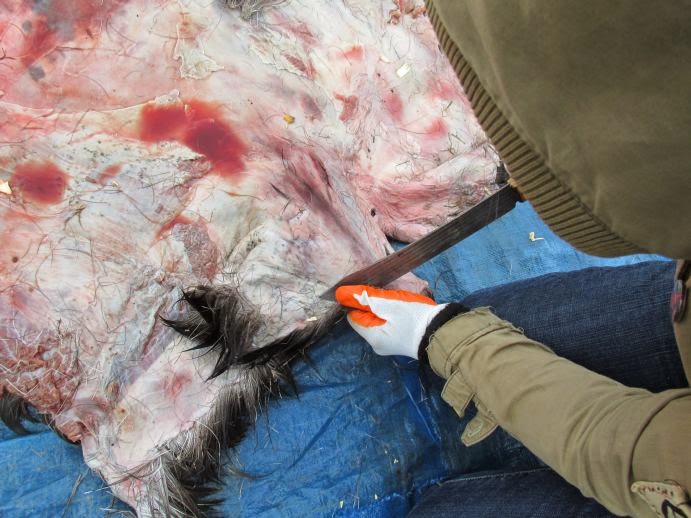Ok, so I stopped at the part where you have scrape both flesh and hair off the hide.
At this point, and it can be done at any point really, we went into the woods to collect rotten spruce wood. It cannot be jack pine or the hide will turn black.
Because our wood was not dry we had to put it in a tent and dry it.
Next you spray the hair side of the hide with the tanning "medecine" traditionally it includes the moose brain, but we did not have the brains so it was a mixture of water, mayonnaise, sardines, lard, liver and alkaline soap.
You then fold the hide and let the medecine soak in for at least one night. Because it was quite cool at that point we had to keep the hides warm so the fat would sink into the hide and we put them in the smoking house. Typically you would just put them in the sun. Below you can see the hide has already taken some colour from the smok. If it had been warming in the sun it would still be white.
Then the medecine has to be washed off and scrape off when wet in a very different way than previous scraping.
Then you wring it to take out as much water as possible
Then dry it completely, and again because it was raining and snowing at this stage we had some difficulties.
And when it is dry it is ready for the final smoking.
It is sewn into the shape of a bag and hang over a fire of rotten spruce wood.
Here are the first two hides we did in the course, the next two were nicer as we had a better sense of what to do and not do.
























































